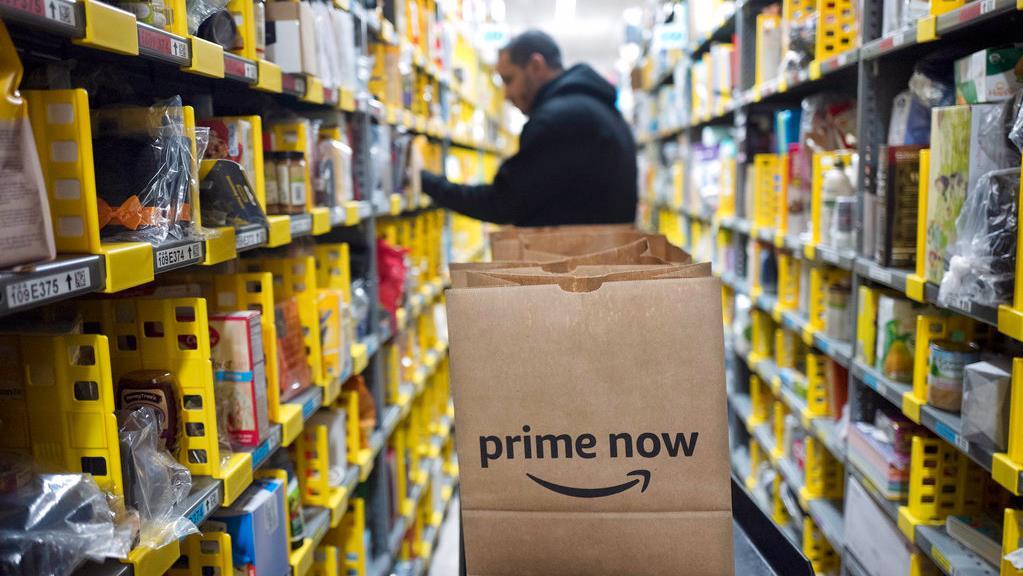Amazon's HQ2 losers hold out hope for consolation prize
Amazon.com Inc.'s search for a second headquarters location has disappointed a couple hundred small towns and big metros across North America.
But there is a silver lining, which officials at some losing cities say they factored into their applications -- the chance to tout themselves to Amazon as a destination for a smaller investment, such as one of the data centers and warehouses the company is rapidly building in the U.S.
Amazon on Thursday announced 20 finalists, selected from 238 North American applicants, to be its so-called HQ2. The company expects to finalize its choice this year and has said the winner can expect up to 50,000 high-paying jobs and $5 billion in investment over nearly two decades.
Amazon added, in a statement, it learned about new communities that it will consider for future projects.
"There'll be one bride and over 200 bridesmaids," says John Boyd, principal at the Boyd Co., which helps companies select sites. "It's still a very valuable process for cities that fall short."
Amazon has started to reach out to some losers. Small-business owners who proposed Anchorage, Alaska, for HQ2 knew it was a long shot. Because of its location, the city -- which boasts flight times of 9.5 hours or less to 95% of the industrialized world -- already hosts major United Parcel Service Inc. and FedEx Corp. air hubs and could prove attractive to Amazon as it develops its own logistics network.
Meghan Stapleton and Carmen Baker, two business owners who hand-delivered Anchorage's proposal to Amazon headquarters, said one of the company's economic-development team members called Thursday to say he appreciated their efforts and planned to contact the state's economic development team to discuss further possibilities, although he declined to specify what they might be.
"We made another pitch on our call on our merits, making sure that we're on their radar," Ms. Stapleton said. "That was all we wanted, was to be considered for a place at the table."
Amazon's individual logistics and operations facilities to date don't compare with the scale of HQ2, but the company is on a construction tear. According to estimates by supply-chain consultancy MWPVL International Inc., which tracks Amazon warehouse growth, the company now has about 320 fulfillment centers, sort centers, hubs and other logistics facilities in the U.S. That's up from 239 a year earlier and 77 five years ago.
Amazon also has been opening data centers and offices around the world. And it held a job fair in August to hire 50,000 mostly warehouse workers across the country, part of its larger pledge to create more than 100,000 full-time U.S. jobs through the middle of this year. Its number of employees topped 540,000 in the third quarter, up about 77% from the same quarter in 2016, in part due to its acquisition of Whole Foods.
An Amazon spokesman said the company invested more than $100 billion in the U.S. between 2011 and 2016.
Typically, a new warehouse, such as one Amazon recently announced for a Baltimore suburb, brings roughly 1,500 full-time jobs with benefits, as well as millions of dollars in investments and further advantages, such as additional indirect job creation.
Still, those blue-collar jobs tend to be hourly, often paying starting wages between about $12 and $14 based on location. That compares with the promised average salary at the new headquarters of $100,000 a year. And those new jobs can be tough, requiring heavy lifting and standing all day.
Major cities held an edge in Amazon's headquarters competition, given requirements like population size and transportation options. But that didn't stop less-prominent locales from trying, including small, rural towns like Rockdale, Texas, and bigger cities like Birmingham, Ala., which on Thursday tweeted an Amazon smile logo underlining "HQ3?"
Officials in some smaller areas said getting on Amazon's radar for possible investments was a factor in their HQ2 application.
"We feel that there's a future for Amazon here in the state of Idaho," said Clark Krause, executive director of the Boise Valley Economic Partnership. He said he hopes Amazon chooses to locate a future new development there. "I don't know exactly when that would be, but I think we're well positioned because they don't have a lot of distribution points in the state," he said.
His group promoted the region's cluster of companies with food logistics expertise to Amazon, which last year bought Whole Foods in an expansion into groceries. "We knew they weren't coming" for HQ2, Mr. Krause said, but "hey, if you're inviting us to talk to you, we're going to take that opportunity."
Still, many applicants won't be considered for new projects. And some local governments have drawn criticism for wasting taxpayer money on long-shot proposals.
Losing out on Amazon could still leave room to use resources compiled from that process to attract another major company, some officials said. Long Beach, Calif., proposed a location for Amazon -- but would also like to woo rival Alibaba Group Holding Ltd. of China, said John Keisler, Long Beach's director of economic development. The city is banking on its expertise as a logistics hub between the companies' two home countries.
Connecticut publicized pieces of its proposals to capitalize on the enormous attention around Amazon's contest and to try to draw interest from other companies, says Catherine Smith, commissioner of the Connecticut Department of Economic and Community Development.
Connecticut knew "it's a long shot for HQ2," she said. But "I think the process itself was very valuable for the state."




















